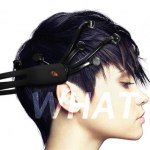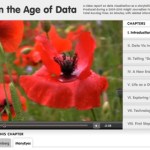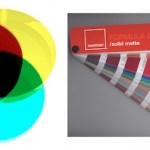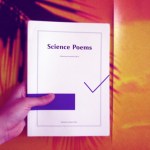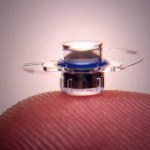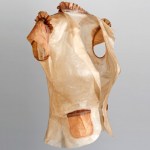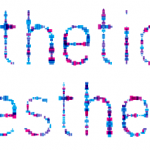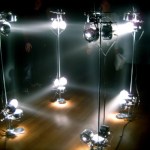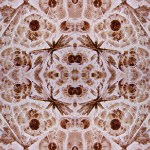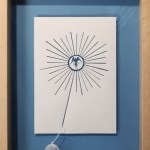design
Dave Hone's blog, Archosaur Musings, is hosting a wonderful series of interviews with paleoartists - artists and illustrators who specialize in resurrecting lost species for scientific publications, popular media, and/or fine art. Check out Mark Witton and Todd Marshall for particularly interesting perspectives.
Not only are these pretty posts with lots of eye candy, they're also excellent windows into that varied career options for anyone considering freelance medical or biological illustration. Kudos to Dave Hone for this truly useful (and I'm sure very time-consuming) series of sciart…
A few months ago, I attended Cyborg Camp in my hometown of Portland, Oregon. Cyborg Camp is an "unconference," basically a room full of cyberpunks, mega-nerds, and aspirational coders that gather in an office building to talk about the "future of the relationship between humans and technology." This event deserves a separate entry, but for now I'd like to recall a particularly evocative thing: that the most heartbreaking thing I saw at Cyborg Camp was an adult man hopelessly tangled in a web of cables.
It was his own off-the-shelf wearable computing system, a gordian thing connecting his…
In less than a month (December 2nd), Christie's will auction off Edward Tufte's library - an idiosyncratic collection of first edition books, plates, prints, and ephemera that the dataviz guru calls his "Museum of Cognitive Art," and I call "Jessica's Christmas List."
I'm not going to sample low-rez images of the lots here, because there's a stunning slideshow, complete with curation, at the Christie's website. If you've got ten minutes, this is virtual antiquarian dataviz windowshopping at its best.
There appear to be 160 lots; Tufte's website describes it as "200 rare books, including major…
Knight Fellow Geoff McGhee created this polished video documentary series about how data visualization is infiltrating and transforming journalism. Interviews with Many Eyes creators Fernanda Viegas and Martin Wattenberg, Amanda Cox of the New York Times, and other dataviz luminaries are coupled with bios and links to further information, some history of visualization techniques, industry context (is dataviz profitable? who's doing it?) and lots of lovely examples. The last section of the video, "First Steps," is a mini-tour of useful DIY sites like Swivel and Wordle (which is ridiculously…
We can babble philosophically about whether or not what we call "red" looks the same from another person's eyes, we can compare the adjectives we use to specify colors--is it maraschino red or cayenne?--but when we're talking to our computers, categorizing flowers, designing objects for mass production, branding a company, or establishing a flag's official colors we have to be able to be specific about which exact shade of red we want.
These days we have standard color systems that define colors as specified mixes of red, green, and blue pixels on screen, specific mixtures of pigments in…
There's a neat article in the Guardian today about designing new foods with genetic engineering and biotechnology.
Food, science, and design are intertwined from how we grow our food to how we eat it, from microwavable dinners to three-star molecular gastronomy at El Bulli. Designers like Oron Catts and James King who explore the possible future of synthetic biology and biotechnology present new ways of thinking about producing and shaping new foods like in vitro meat.
Although the work of designers such as Catts and King is speculative, it raises interesting questions about the future role…
My Synthetic Aesthetics partner, Sissel Tolaas, is featured in the terrific current issue of the German interview magazine mono.kultur. Her work focuses on smell, exploring the unique smellscapes of different cities, creating provocative scents to show in art galleries, branded "logo" scents for Adidas, "Swedish" scents for Ikea, and therapeutic memory-triggering scents, part of the healing process for patients dealing with traumatic experiences. Until we have smell-o-vision, her work is almost aggressively analog--"beyond what is seen and heard to something indiscernible yet more…
Earlier this year, I received a charming email from a pair of Helsinki-based artists and designers who work under the name of OK DO. OK DO is a socially-minded design think tank and online publication; they dug Universe and wanted to know if I'd contribute to a new publication and exhibition project they were working on. The project, Science Poems, was perfectly up my alley: a variety of articles and work loosely structured around the "poetry and multi-sensorial aesthetics of natural sciences rather than their functionality and logic."
For the occasion, I wrote a short piece about the…
Dezeen Magazine has the drop on this superb clock that shows the time in every time zone, using just one hand.
The clock is called Bent Hands and is designed by Giha Woo and Shingoeun.
Via Neatorama
My grandmother suffered in her old age from macular degeneration, a common age-related eye disease that causes the center of your visual field (the macula) to gradually fritz out. As it affected her more and more, the font size in her emails ballooned to cartoonish sizes. She began walking with a cane, and needed a fancy electronic doo-dad to tell her when her cup of tea was full. By the end of her life, she was totally blind.
Watching my grandmother wink out from the world of seeing was tragic; the knowledge of macular degeneration's heredity terrifying. Relatives of those who have…
I don't usually like to post links from BoingBoing because I imagine everyone has already seen this already, but as it is about some of my favorite things (synthetic biology, biomaterials, and fashion) I couldn't resist!
Designer Suzanne Lee makes clothes using cellulose-based fabrics made entirely by cultures of yeast and bacteria. From what I could understand from the ecouterre article, the process is similar to how kombucha is made, using the microbes to ferment a green tea mixture, although I thought that the film that forms on top of the fermenting tea in kombucha is some sort of yeast/…
I am thrilled to announce that I will be one of the Synthetic Aesthetics residents this fall. Synthetic Aesthetics is a new program run through Stanford and the University of Edinburgh and funded by the National Science Foundation and the UK's Engineering and Physical Sciences Research Council that asks the question "how would you design nature?":
Synthetic Biology is a new approach to engineering biology, generally defined as the application of engineering principles to the complexity of biology. Biology has become a new material for engineering. From biological circuits made from DNA to…
I believe the world is a complex phenomenological experience that can be explained, rationalized, and lived in myriad different ways. The way I see it, we all begin with the same fundamental mystery -- why are we here? what is life? -- and we attack this problem with whatever tools we find work best; some of us use science, parsing and decoding the secrets of life with a toolbox of methods and reason. Others, with the same goals in mind, use art, arranging ideas and objects in intentional ways designed to root at the questions of existence. Others still depend on the framework of religion to…
There's a terrific new article about synthetic biology in SEED by James King, go check it out! Here's a little taste:
"Synthetic biology" is a catch-all label liberally applied to a host of methods for designing and constructing living things. Given the term's multiple definitions, one of Synthia's most immediately useful applications may be to place the achievement it represents within the context of synthetic biology's various flavors, in order to clarify what the creation of artificial life might actually mean.
So cute, so bioephemeral: designer Wes Thomas created a laser-cut business card that snaps out to assemble a little giraffe. He's also done a gorilla.
Via Notcot.
So I had the pleasure of meeting the awesome Dr. Isis a few weeks ago. It turns out she is even more awesome in person than she is in pseudonymity. And she brought me a fabulous thing: a scarf from A Slice of Life Scarves. Creator Eve Reaven, a Bay Area cell biologist, "has continuously marveled at the intricacy and beauty of the natural patterns found inside cells. She shares what she has seen with others through designs for scarves and other textiles. In the current selection, she captures the essence of structures related to cell movement, cell traffic, energy and performance. Many of the…
"Fossil geometry" (detail)
Based on Eschschottzia Californica seeds collected by Mr W Reeves, April 1864.
From the collection of the Royal Microscopic Society.
UK sci-artist Heather Barnett has created a line of wallpapers using micrographs of cells, crystals, seeds, nanofibers, etc. They'd be particularly striking in a loft or other industrially inspired space - including a lab or a clinic waiting room. Come on, PIs, you can squeeze a wallpaper budget in your next grant application, can't you?
"Fossil geometry" (repeat)
Check out more of Barnett's biological wallpapers below the fold…
This is what I miss out on by not reading the physical copy of the New York Times: ads! I recently picked up a copy of the Times science section and saw an ad for these wonderful vintage patent office models from the 1900s.
As if they're not steampunky enough, each one comes with a little yellowed, handwritten, calligraphic tag that I'm dying to read because I am convinced it must contain cryptic clues to some sort of awesome Neil Stephenson-style mystery. Right??
My friend Shana mentioned this one to me: it's an LED sculpture that opens at night and folds closed during the day, like a light-sensitive flower. The creator, Wendy Legro, says: "The sun is our natural light source. Our homes are filled with artificial light replacing it, undeliberately disrupting our biological clock. This product works autonomously with a light sensor. During the day, mechanical flowers are closed enabling sunlight to come in. When sun sets, the flowers open and start to emit light. In this way, awareness for a beautiful phenomenon will be brought back."
I'm not usually…
An email from reader Jake prompted me to repost this look at Peter Callesen, originally posted back in 2007. Enjoy!
Angel, 2005
paper and glue in artist made frame
Peter Callesen
This beautifully written essay at Cabinet of Wonders, Mechanical Thinking and the Human Soul, includes some amazing sculptures by paper artist Peter Callesen. Callesen's A4 papercut series are razored from a sheet of paper and assembled, still tethered umbilically to their mother sheet, yet folded and glued into a 3D shape that responds to the original 2D negative space they departed.
Halfway through, (detail),…
